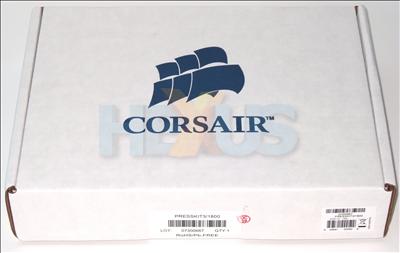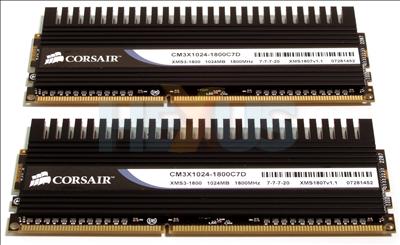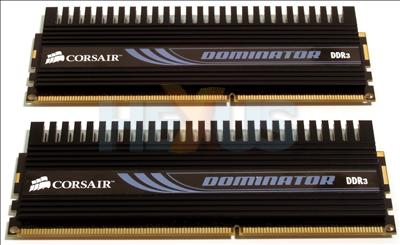DDR3? A physical look.
DDR3?
DDR3 memories carry an 8-bit prefetch buffer which quadruples the cells' internal clockspeed, so cells running at, say, 200MHz will have I/O operating at 800MHz and a final, effective speed of 1600MHz. Now, DDR2 that runs with an identical core speed will use a 4-bit buffer. Do the math and it'll have half the available bandwidth. There's a bunch more technology behind DDR3, so head on over here for a brief recap.Importantly, DDR3 also uses a DDR2-like 240-pin layout but has the dividing notch in a different location. That's why, physically, motherboards require different DIMM slots when supporting either memory standard. Most manufacturers producing high-end Intel P35 chipset-based motherboards have tended to market a standalone DDR3 model and a hybrid edition that provides both DDR2 and DDR3 slots. Remember, though, that you cannot use both technologies concurrently.
So DDR3 is better than DDR2, right? It's not quite that clear-cut, folks, as DDR3's higher latencies somewhat offset bandwidth advantages. Further, thinking of your wallet, DDR3 is still pretty much in its infancy and, as such, pricing isn't driven down by the demand and associated economies of scale evident with mass-produced DDR2.
The race to market the fastest DDR3 follows a well-established path. The major enthusiast-class players continually attempt one-upmanship on almost a weekly basis, so what was considered cutting-edge in July is decidedly average by September.
Right now, DDR3-1800 is pretty much the limit, and Corsair obliged by sending us a 2GiB pack of its Corsair DOMINATOR TWIN3X2048-1800C7 G memory for review.
DDR3 is specified to operate at 1.5V, down from the 1.8V laid out for DDR2. Ramping up the final clock to 1800MHz necessitates some tried-and-trusted cooling and a bump in the voltage to 2.0V - 33 per cent above default.
Corsair adds its DHX (Dual-path Heat eXchange) cooling that uses custom-designed circuit boards and oversized aluminium heatspreaders to eliminate localised hot-spots that keep the over-volted ICs relatively cool when under load. Now, controlling heat becomes paramount as one approaches the upper echelons of performance, so keeping it in check becomes vitally important. Cooler-running ICs will, ceteris paribus and up to a certain point, operate at higher frequencies than hotter-running ICs.
The DOMINATOR TWIN3X2048-1800C7 G, as the name suggests, operates at an effective 1800MHz with 7-7-7-20 latencies. The modules are pre-programmed with a 1333MHz 9-9-9-24 SPD. The package also ships with a DOMINATOR Airflow fan, which clips on over the top, and, if used, reduces heat further. It's not a requirement for operation at the stated frequencies and latencies, though.
Corsair tests paired modules on an ASUS P5K3 Deluxe motherboard and only recommends it to realise the RAM's full potential. Interestingly, one must use the two black-coloured DIMM slots (A2 and B2) to ensure stable operation at 1800MHz. Further fine-turning needs to be undertaken in the BIOS, meaning the '1800C7 set isn't a simple plug 'n' play pair - you need to have the correct motherboard, settings, and, ideally, a CPU and chipset capable of high-ish front-side bus speeds.
Official specifications
2GiB pack.Tested on ASUS P5K3 Deluxe motherboard, as a pair, at 1800MHz and 2.0V.
DHX and Airflow cooling
240-pin (incompatible with DDR2, however.)
Lifetime warranty.
£430 (as at 13/09/07)
Let's now see just how what kind of impact DDR3-1800MHz has on our benchmarking suite.












